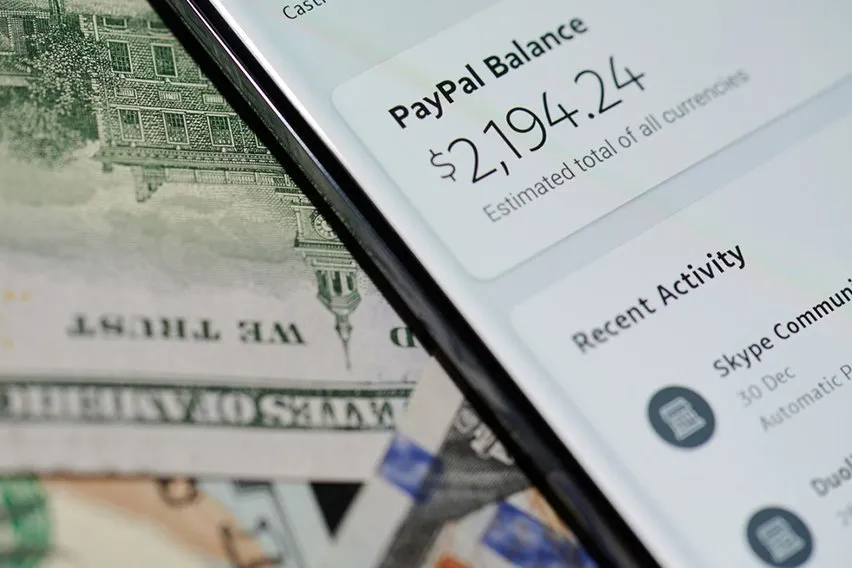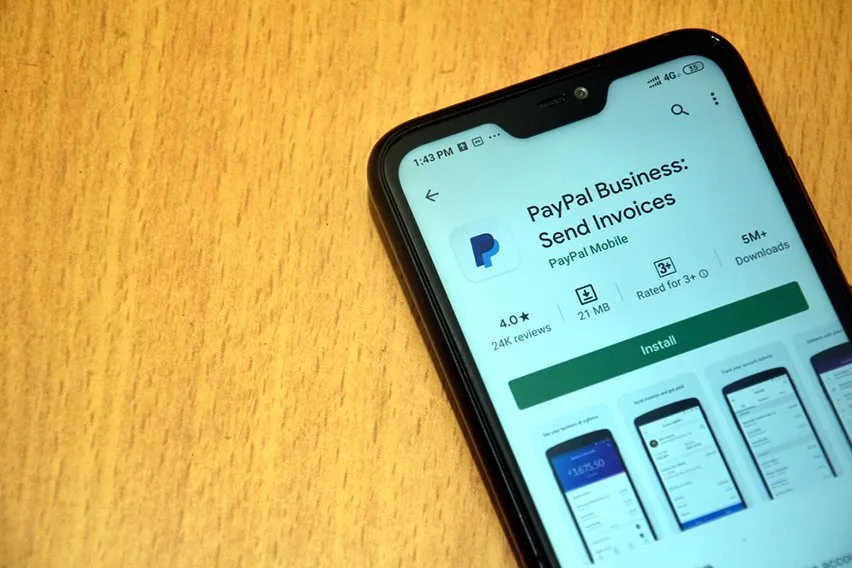Stripe vs Shopify: Which Is Best for Your Business

Stripe and Shopify are both online payment options designed to allow businesses to accept major credit cards, debit cards, and other accepted payment methods.
These customizable payment solutions are most suitable for online stores with virtual storefronts. Using data encryption and organizational and administrative measures to keep data safe, small business owners like you can trust these secure platforms.
In this article, we’ll compare the key differences between Stripe vs. Shopify payments, so you can make an informed decision when choosing which flexible payment solution to use.
Key Takeaways
- Stripe and Shopify help small businesses accept payments online.
- Stripe works in 46 countries and 135 currencies, which is great for international sales.
- Shopify Payments is built into Shopify stores and works in 23 countries. It accepts various currencies paid through major credit cards, debit cards, and digital wallets.
- Stripe charges per transaction, while Shopify requires a subscription with added fees.
- Stripe is flexible for global use, while Shopify Payments is limited to Shopify stores.
Table of Contents
- Stripe Overview
- Shopify Payments Overview
- Stripe Features Overview
- Shopify Features Overview
- Stripe vs Shopify Payments: Pricing
- Stripe Pros and Cons
- Payment Options to Consider for Your Business
Stripe Overview
Stripe provides small businesses worldwide with various customizable payment method options that allow businesses to tailor their payment API to suit their brand and their needs as online vendors.
One of the most versatile payment solutions for e-commerce platforms, Stripe accepts debit and major credit card payments, bank debits and transfers that pull funds directly from the client’s bank account, digital wallets, and buy-now-pay-later payment methods like Afterpay and Klarna.
Stripe’s flexible infrastructure, global support availability in 46 countries, and merchant cash advance service make it a popular choice, especially for businesses planning to sell their products internationally.
Shopify Payments Overview
Shopify is the default payment processing service that allows businesses to accept payments when they open a Shopify store online, with the option for on-site client payments for those with a physical storefront.
This customizable integrated payment service provider is available in 23 countries, accepting various currencies paid through major credit cards, debit cards, and digital wallet payments as well as a variety of local payment methods, like Bancontact in Belgium.
Shopify is easy to use, especially with its accelerated checkout option “Shop Pay” which allows clients to save their payment information for a more convenient, quicker checkout.
Stripe Features Overview
Knowing the details about each of these payment service providers is essential if you’re deciding between Stripe vs. Shopify. The following are some key features of Stripe that may help you make your decision.
Accepted Payment Methods
Stripe can process payments using the following accepted payment methods:
- Debit and credit card payments
- Digital wallets like Apple Pay and Google Pay
- ACH transfers, or bank transfers
- Buy now, pay later options like Affirm, Afterpay, or Klarna
- Local and international methods like PayNow in Singapore, or SPEI in Mexico
Stripe accepts international payments and is available in 46 countries, with support for payment processing in over 135 currencies, making it a favorite for businesses with a global audience.
Implementation
Stripe makes it easy to add their payment processor to your website or online store. With numerous integration options like pre-built forms, customizable templates, shared payment links, and more, you can create your ideal payment page, and tailor invoices to your needs, or use pre-built integrations with popular platforms like WooCommerce or Adobe Commerce. Incorporate your branding as you curate the customer experience you want to provide.
Sign-Up And Payout Schedule
When you create your Stripe Payments merchant account, you don’t have to provide your bank details, no contract is required, and you can cancel at any time without any cancellation fees or penalties.
Stripe defaults to a daily payout schedule, but once you create your account you can adjust the timing to best suit your business needs. Choose between weekly, monthly, or custom settings. In most cases, once your client sends their payment, the money will be available within 2 business days, although this can vary depending on your geographic location and your bank.
Shopify Features Overview
The Shopify platform is a convenient way to sell products, with the option for in-person transactions and online transactions. Using its simple online store builder, you can create and tailor your Shopify store to suit your business needs. The following are some of the features you receive when you create your Shopify account.
Accepted Payment Methods
Shopify users have the option to pay with:
- Credit and debit cards
- PayPal
- Digital Wallets like Apple Pay, Google Pay, and Microsoft Pay
- Local and international methods like Bancontact in Belgium, or iDEAL in the Netherlands
Shopify is available in over 23 countries and offers support for payment processing in over 15 currencies.
You can also use manual payment methods like cash on delivery (COD), money orders, and bank transfers. In this case, Shopify won’t process the payments but will record and manage the orders as usual. Depending on the method you’ll have to set up the payment process with your bank, mail service, or other providers.
Implementation
When you join Shopify, Shopify Payments will be automatically integrated as part of your subscription. All you have to do from there is activate your account, and you can start accepting payments by:
- Creating a custom checkout on your online store, and start accepting payments directly
- Adding an embedded link to your Shopify Payments checkout on your existing website or eCommerce platform
- Request a Shopify POS card reader, and pair it to your smartphone or tablet to accept payments in your in-person store
Sign-Up And Payout Schedule
Before you can use Shopify Payments, you must sign up for a Shopify subscription, and once you’ve subscribed, adding Shopify Payments is free. Shopify Payments offers contract-free plans every month with no cancellation fees, and your funds are sent out 2 business days after your client makes their purchase.
Businesses preferring a more regular inflow of cash can also choose to set up automatic weekly or monthly payouts.
Stripe vs Shopify Payments: Pricing
In the table below, we’ll look at the differences between Stripe vs. Shopify fees.
| Stripe | Shopify Payments | |
| Monthly Fees | It’s free to set up your account, and there are no monthly fees. All fees are charged per transaction. | Shopify’s monthly fees vary depending on the Shopify e-commerce plan you choose. These are as follows:
Shopify also has options for those who prefer to sell in-person rather than online. These are:
|
| Payment Processing Fees | Stripe’s transaction fees are as follows:
|
|
| Additional Fees |
|
|
Stripe Pros and Cons
Like any payment processing system, there are pros and cons to choosing Stripe.
Pros
Customizable
Stripe makes it easy to customize the look of your payment page, even if you don’t understand computer coding.
Change the font, colors, and shapes directly from your dashboard to suit your branding and create the look you want.
Global Reach
Because Stripe is available in 46 countries, retailers can expand their reach well beyond the physical borders of their countries.
With Stripe, online businesses can conveniently serve more clients in 135 currencies.
Transparent Pricing
You know what you’re paying for when you choose Stripe.
There are no hidden fees or penalties for cancellations. What you see is what you get with this trustworthy payment processing platform.
Customer Support
Stripe offers robust customer service. When you have questions, or if something goes wrong, Stripe’s team will be there to talk you through it.
Cons
Tech-Focused
People who aren’t technologically savvy may find the Stripe interface challenging to work with at first.
Payment Aggregation Issues
Payment aggregators like Stripe can freeze, hold, or terminate your account if they suspect suspicious consumer behavior.
If your small business depends on getting your money fast, this can cause cash flow issues.
High Processing Fees
When compared to other similar companies, many businesses consider their standard 2.9% plus 30 cents per transaction with a basic account to be high.
Limited Functionality For In-Person Payment
While your Stripe account has the option to incorporate in-person payments using a Stripe Terminal, it’s not a full POS system and won’t help with inventory management or tracking employee performance.
Shopify Pros and Cons
Although Shopify is a popular e-commerce platform, there are pros and cons to choosing to use its integrated payment processor.
Pros
Integrated With Shopify
When you open your Shopify account, you’ll have the option to activate Shopify Payments immediately, at no extra cost.
It’s integrated into the program, for seamless transactions that will simplify your workflow.
Customer Support
Excellent customer support means you don’t have to wait for answers to your questions.
The Shopify customer service team is available to help you work through your issues in the always-available chat.
Easy Setup Process
The automatic integration with your Shopify store makes it simple to sell your product and earn money right away after signing up.
Transparent Pricing
There’s nothing worse than hidden transaction fees or surprise monthly fees.
Shopify’s costs are available to view on their website, without any sneaky charges or penalties lurking in the small print.
Cons
Limited Availability
Shopify is only available in 23 countries making it less accessible than other similar platforms.
If you’re planning on expanding your market in the future it might not be the right choice for your business.
Limited Payment Options
Shopify accepts credit cards, digital wallets, and local payments like iDEAL, but can only support 15 currencies at this time.
Restricted To Limited Platforms
Shopify is automatically set up for you when you open your Shopify store, but there may be compatibility issues if you try to use this payment provider on other platforms.
Payment Options to Consider for Your Business
FreshBooks Payments powered by Stripe is an easy-to-use business solution that can help you streamline your workflow while better organizing your invoicing and simplifying your record-keeping processes. Small business owners like you can give clients more payment options, send invoices, and provide an easy checkout link, making it easier than ever for your clients to pay for the goods and services you provide.
With FreshBooks, you can automate billing by sending recurring invoices and saving clients’ cards on file to automatically bill clients on a predesignated payment schedule. FreshBooks makes financial management easier than ever, thanks to its support for multiple payment methods, payment processing features, seamless invoicing capabilities, reduced transaction fees, and enhanced cash flow,
FreshBooks’ partnership with Stripe gives customers the best of both worlds, with all the benefits of Stripe’s latest technology and expansive payment features along with the accounting features built into FreshBooks.
With just a few clicks, you can integrate FreshBooks Payments with other FreshBooks software for automated and simplified bookkeeping, as all payment transactions and fees will be automatically recorded. FreshBooks Payments is the practical choice for small business owners across the nation.
Reviewed by
Michelle Payne has 15 years of experience as a Certified Public Accountant with a strong background in audit, tax, and consulting services. Michelle earned a Bachelor’s of Science and Accounting from Minnesota State University and has provided accounting support across a variety of industries, including retail, manufacturing, higher education, and professional services. She has more than five years of experience working with non-profit organizations in a finance capacity. Keep up with Michelle’s CPA career — and ultramarathoning endeavors — on LinkedIn.
RELATED ARTICLES





 PayPal Balance: What It Is And How to Check It
PayPal Balance: What It Is And How to Check It What Is a PayPal Invoice? And How Does It Work?
What Is a PayPal Invoice? And How Does It Work? How to Set Up a PayPal Business Account: 8 Steps
How to Set Up a PayPal Business Account: 8 Steps What Is eBank (Electronic banking)?
What Is eBank (Electronic banking)? IMPS Vs NEFT: What’s the Difference?
IMPS Vs NEFT: What’s the Difference? How to Confirm Bank Account on PayPal
How to Confirm Bank Account on PayPal